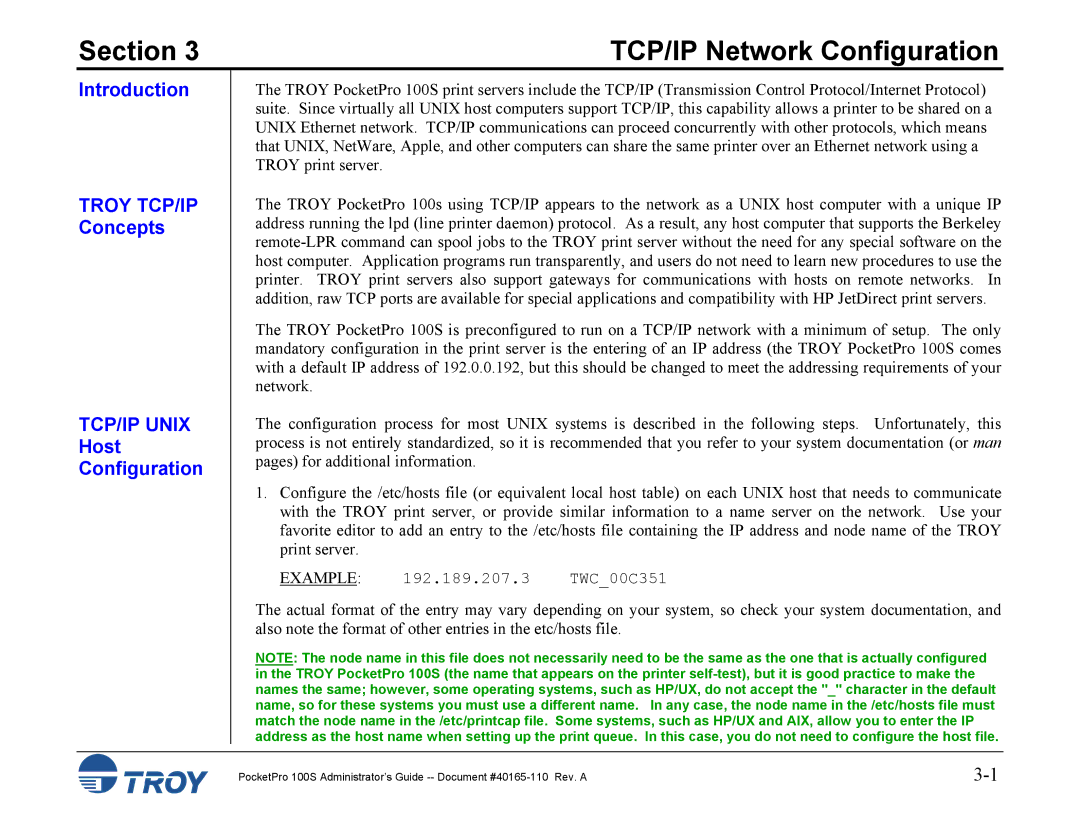
Section 3 | TCP/IP Network Configuration |
Introduction
TROY TCP/IP Concepts
TCP/IP UNIX
Host
Configuration
The TROY PocketPro 100S print servers include the TCP/IP (Transmission Control Protocol/Internet Protocol) suite. Since virtually all UNIX host computers support TCP/IP, this capability allows a printer to be shared on a UNIX Ethernet network. TCP/IP communications can proceed concurrently with other protocols, which means that UNIX, NetWare, Apple, and other computers can share the same printer over an Ethernet network using a TROY print server.
The TROY PocketPro 100s using TCP/IP appears to the network as a UNIX host computer with a unique IP address running the lpd (line printer daemon) protocol. As a result, any host computer that supports the Berkeley
The TROY PocketPro 100S is preconfigured to run on a TCP/IP network with a minimum of setup. The only mandatory configuration in the print server is the entering of an IP address (the TROY PocketPro 100S comes with a default IP address of 192.0.0.192, but this should be changed to meet the addressing requirements of your network.
The configuration process for most UNIX systems is described in the following steps. Unfortunately, this process is not entirely standardized, so it is recommended that you refer to your system documentation (or man pages) for additional information.
1.Configure the /etc/hosts file (or equivalent local host table) on each UNIX host that needs to communicate with the TROY print server, or provide similar information to a name server on the network. Use your favorite editor to add an entry to the /etc/hosts file containing the IP address and node name of the TROY print server.
EXAMPLE: 192.189.207.3 TWC_00C351
The actual format of the entry may vary depending on your system, so check your system documentation, and also note the format of other entries in the etc/hosts file.
NOTE: The node name in this file does not necessarily need to be the same as the one that is actually configured in the TROY PocketPro 100S (the name that appears on the printer
PocketPro 100S Administrator’s Guide |
